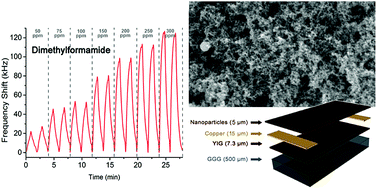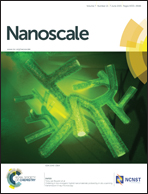A magnonic gas sensor based on magnetic nanoparticles
Abstract
In this paper, we propose an innovative, simple and inexpensive gas sensor based on the variation in the magnetic properties of nanoparticles due to their interaction with gases. To measure the nanoparticle response a magnetostatic spin wave (MSW) tunable oscillator has been developed using an yttrium iron garnet (YIG) epitaxial thin film as a delay line (DL). The sensor has been prepared by coating a uniform layer of CuFe2O4 nanoparticles on the YIG film. The unperturbed frequency of the oscillator is determined by a bias magnetic field, which is applied parallel to the YIG film and perpendicularly to the wave propagation direction. In this device, the total bias magnetic field is the superposition of the field of a permanent magnet and the field associated with the layer of magnetic nanoparticles. The perturbation produced in the magnetic properties of the nanoparticle layer due to its interaction with gases induces a frequency shift in the oscillator, allowing the detection of low concentrations of gases. In order to demonstrate the ability of the sensor to detect gases, it has been tested with organic volatile compounds (VOCs) which have harmful effects on human health, such as dimethylformamide, isopropanol and ethanol, or the aromatic hydrocarbons like benzene, toluene and xylene more commonly known by its abbreviation (BTX). All of these were detected with high sensitivity, short response time, and good reproducibility.



 Please wait while we load your content...
Please wait while we load your content...